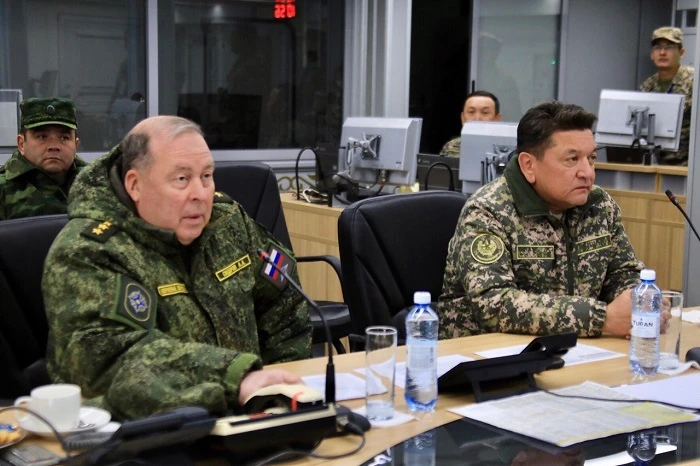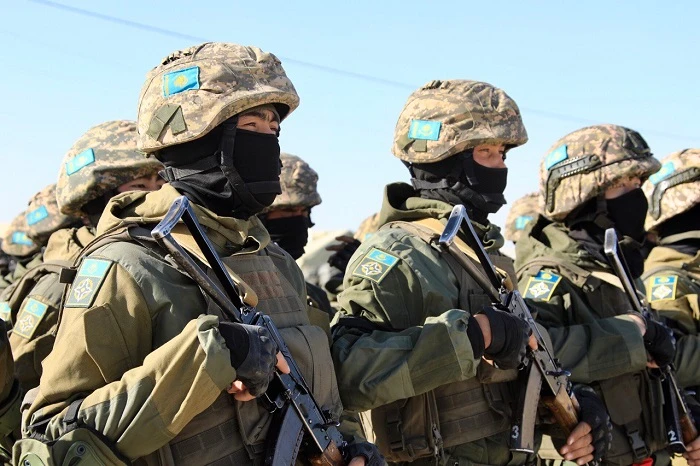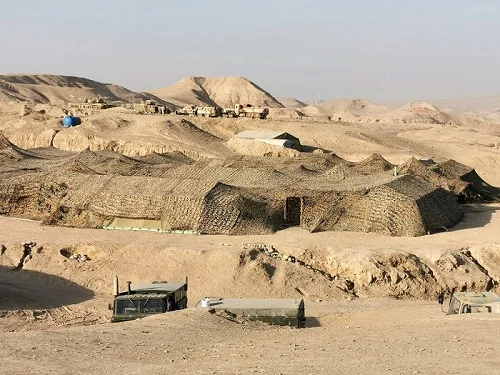A special exercise of the Russia-led Collective Security Treaty Organisation (CSTO) armed forces which kicked off in the Zhambyl region of Kazakhstan on Monday features a new formation to deal with the consequences of a biological emergency for the first time.
The core of the new unit formed within the CSTO Collective Rapid Response Forces (CRRF) is made up of Russian specialists from research units of the Russian Ministry of Defence who will be involved in practical actions to counter a notional particularly dangerous infection of unknown origin.
The training of CSTO forces began in Kazakhstan on September 26 but the active phase of the exercises takes place at the Matybulak training ground from October 3 to October 7 in the difficult conditions of a mountainous desert area.
Military contingents of the CSTO member countries are practising preparation and conduct of joint operations on localization of armed conflict in the Central Asian region of collective security.
The intergovernmental military alliance organisation of former Soviet states including Armenia, Belarus, Kazakhstan, Kyrgyzstan and Tajikistan besides Russia has been deeply worried about the security threats emanating from the territory of Afghanistan ever since the Taliban takeover of Kabul last year.
Agreeing that the situation in Afghanistan remains tense, characterized by instability and potential danger, the main CSTO joint training events are being held in the Central Asian region in 2022.
Even as Moscow’s ‘special military operation’ continues in Ukraine, more than 6,500 people and over 850 units of military and special equipment – including aircraft, helicopters and unmanned aerial vehicles from the military contingents of the CSTO member states – are involved in the ongoing combat training events.
Operational groups of the Joint Staff and the CSTO Secretariat, the formation of special forces from among special units of the internal affairs bodies (police), security agencies and special services, as well as authorised bodies in the field of prevention and elimination of consequences, are participating in the emergency situation exercises.

“For the first time, a new formation of the CSTO armed forces will be involved in practical actions – a joint division of radiation, chemical and biological protection and medical support,” said CSTO Joint Staff head Colonel General Anatoly Sidorov on Monday.
The opening ceremony was also attended by CSTO Deputy Secretary General Takhir Khairulloev and representatives of the armed forces of the countries participating in the exercises.
“The year 2022 is characterized by an aggravation of the situation in all regions of the collective security of the CSTO. Under these conditions, the CSTO Troops (Collective Forces) must remain in constant readiness to perform tasks as intended, including in the conditions of modern proxy warriors and armed conflicts with an enemy operating under a false flag, by proxy,” added the Russian Army General.
Host Kazakhstan’s First Deputy Minister of Defence and chief of its Armed Forces, Lieutenant General Marat Khusainov also stressed the growing importance of the organisation in ensuring stability and security in the region.
“The CSTO countries are strategic partners and allies, and the upcoming exercises will serve not only as a tool for improving the combat skills of military personnel and the coherence of collective forces but will also become an example of effective international military cooperation, achieving success in the direction of sharing experience,” said Khusainov.

The 200-member strong Russian military contingent consists mainly of the military personnel of the 201st military base stationed in Tajikistan as well as units of logistics brigades of the Central Military District from the Kemerovo and Samara regions.
While the transfer of a majority of Russian personnel, weapons and military equipment from Tajikistan was carried out by an IL-76 aircraft from the Gissar airfield to the south of Kazakhstan, the logistic support brigades of the Central Military District, stationed in the Kemerovo and Samara regions, arrived in the area of the exercises by rail.




















